Potřebujeme váš souhlas k využití jednotlivých dat, aby se vám mimo jiné mohly ukazovat informace týkající se vašich zájmů. Souhlas udělíte kliknutím na tlačítko „OK“.
ASTM F2164-13
Standard Practice for Field Leak Testing of Polyethylene (PE) and Crosslinked Polyethylene (PEX) Pressure Piping Systems Using Hydrostatic Pressure
Automaticky přeložený název:
Standardní praxe Terénní Testování těsnosti z polyetylénu (PE) a síťovaného polyetylenu (PEX) Tlak potrubních systémů pomocí hydrostatický tlak
NORMA vydána dne 1.4.2013
Informace o normě:
Označení normy: ASTM F2164-13
Poznámka: NEPLATNÁ
Datum vydání normy: 1.4.2013
Kód zboží: NS-53047
Počet stran: 5
Přibližná hmotnost: 15 g (0.03 liber)
Země: Americká technická norma
Kategorie: Technické normy ASTM
Kategorie - podobné normy:
Anotace textu normy ASTM F2164-13 :
Keywords:
crosslinked polyethylene, field leak test, hydrostatic leak test, leak test, polyethylene pipe, ICS Number Code 23.040.20 (Plastic pipes)
Doplňující informace
| Significance and Use | ||||||||
|
5.1 If required by the authority having jurisdiction, hydrostatic pressure leak testing may be conducted to discover and correct leaks or faults in a newly constructed or modified polyethylene or crosslinked polyethylene pressure piping system before placing the system in service. Leakage or faults usually occur at connections, joints, and mechanical seals where sealing under pressure is required. (5.2 This practice uses a pressurized liquid to test for leaks. It does not verify if a piping material or a piping system design is suitable for pressure service. The suitability of a piping system for pressure service and its pressure rating or operating pressure is determined solely by its design and its installed components. 5.3 Systems that are not suitable for pressure testing should not be pressure tested. Such systems may contain lower pressure rated or non-pressure rated components that cannot be isolated from test pressure, or temporary caps or closures may not be practical. In these systems, leak inspections should be conducted during and after installation. Inspections typically include visual examination of joint appearance, mechanical checks of bolt or joint tightness, and other relevant examinations. See also Test Method F1417. 5.4 Leakage Allowance—There is no leakage allowance for a section of heat-fusion joined polyethylene piping, because properly made heat fusion joints do not leak. See 5.4.1 Other types of joints or connections in the system may have a leakage allowance. Contact the joint or connection manufacturer for information. 5.5 Expansion Allowance—When test pressure is applied, polyethylene or crosslinked polyethylene pipe will expand slightly due to elasticity and Poisson effects. To compensate for expansion, make-up water is added during the initial expansion phase. The amount of make-up water (expansion allowance) will vary because expansion is not linear. This procedure compensates for expansion with an initial expansion phase, followed by a test phase. In the test phase, expansion is suspended by slightly reducing test pressure. See 9.6. 5.6 Poisson Effect—When test pressure is applied to plastic piping systems that have fully restrained joints (joints such as heat fusion, electrofusion, bolted flanges, and so forth.), diametrical expansion of the pipe may reduce the overall length of the fully restrained section. Poisson-effect length reduction may affect or cause disjoining in other contiguous sections that have partially restrained or non-restrained joints, such as bell-and-spigot joints, when such joints are in-line with the test section. To prevent Poisson-effect disjoining, take measures such as the installation of external joint restraints (diametrical clamps and tie-rods) on in-line non-restrained joints, installing in-line thrust anchors at the ends of the fully restrained section, or isolating the fully restrained test section from piping with non-restrained or partially restrained joints. 1.1 This practice provides
information on apparatus, safety, pre-test preparation, and
procedures for conducting field tests of polyethylene and
crosslinked polyethylene pressure piping systems by filling with a
liquid and applying pressure to determine if leaks exist in the
system.
1.2 This practice does not address leak testing using a pressurized gas (pneumatic testing). For safety reasons, some manufacturers prohibit or restrict pneumatic pressure testing of their products. Failure during a pressure leak test can be explosive, violent, and dangerous, especially if a compressed gas is used. In a compressed gas test, both the pressure stress on the system and the energy used to compress the gas are released at a failure. Contact component manufacturers for information about testing with gas under pressure. 1.3 This practice does not apply to leak testing of non-pressure, gravity-flow, negative pressure (vacuum), or non-thermoplastic piping systems. For field-testing of plastic gravity flow sewer lines, see Test Method F1417. 1.4 The values stated in inch-pound units are to be regarded as standard. The values given in parentheses are mathematical conversions to SI units that are provided for information only and are not considered standard. 1.5 This standard does not
purport to address all of the safety concerns, if any, associated
with its use. It is the responsibility of the user of this standard
to establish appropriate safety and health practices and determine
the applicability of regulatory limitations prior to use.
PPI TR-4-PPI Listing of Hydrostatic Design Basis
(HDB), Pressure Design Bases (PDB) and Minimum Required Strength
(MRS) Ratings for Thermoplastic Piping Materials Available from
Plastics Pipe Institute (PPI), 105 Decker Court, Suite 825, Irving,
TX 75062, http://www.plasticpipe.org. Standard Terminology for Abbreviated
Terms Relating to Plastics (Withdrawn 2024) Standard Practice for Installation
Acceptance of Plastic Non-pressure Sewer Lines Using Low-Pressure
Air (Includes all amendments and changes 5/13/2020). Standard Terminology Relating to Plastic
Piping Systems |
Podobné normy:
Historická
1.3.2012
Historická
1.2.2013
Historická
1.4.2010
Historická
1.12.2009
Historická
1.11.2013
Historická
1.11.2011
Odebírejte informace o nově vydaných normách ZDARMA:
Chcete pravidelně odebírat informace o nově vycházejících normách z celého světa a to zcela zdarma?
Přihlašte se k odběru. Vše je velice jednoduché a absolutně ZDARMA.
Na výběr máte vydavatele z celého světa.


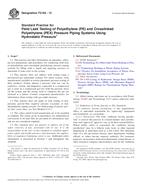
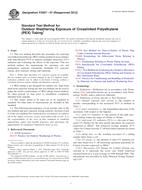 ASTM F2657-07(2012)..
ASTM F2657-07(2012)..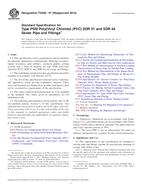 ASTM F2658-07(2013)..
ASTM F2658-07(2013)..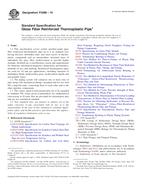 ASTM F2686-10
ASTM F2686-10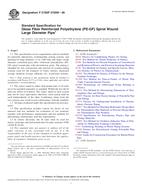 ASTM F2720/F2720M-09..
ASTM F2720/F2720M-09..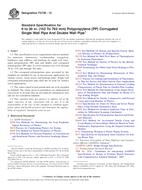 ASTM F2736-13
ASTM F2736-13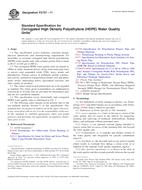 ASTM F2737-11
ASTM F2737-11
 Cookies
Cookies
